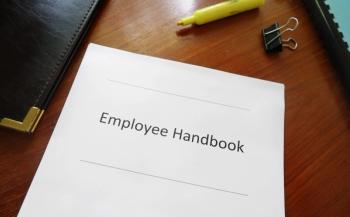
Ready, Aim, Fired! Terminating Bad Apples without Fear
Terminating an employee is never easy, but making the right preparations for your final conversation will help things go as smoothly as possible.
Like that seasonal flu going around, you've avoided dealing with a toxic employee in your healthcare practice. You see the negative impacts on other employees, you hear the swirls of gossip around the office, and maybe you even have other team members leaving because of that one bad apple. You know this person needs to go, but it never seems like the right time.
Now that 2017 is well under way, it's a perfect time to revitalize your team. But before you start cleaning house, there are some precautions you'll need to take.
Even though it's sometimes necessary, firing an employee can be one of the riskiest moves for a small business owner. According to the
You don't have to fear making decisions for the well-being of the physician practice just because of the looming dark cloud of litigation. By taking precautionary steps, you can safely carry out necessary changes to your team.
Is at-will putting you at-risk?
First, know what you can and what you can't do, as an at-will employer. While you can terminate for virtually any reason except an illegal one, you're still bound by law not to fire based on protected classes (race, color, gender, age, pregnancy, many others) and protected activities (discussing wages, voting, filing a workers' comp claim, among others).
If you do try to terminate for one of these numerous illegal reasons, or if an employee claims you did, at-will can quickly turn into "at-risk" for a dangerous lawsuit. Protections cast a wide net, which often makes terminating employees a legal minefield.
Documentation is your shield
Does that mean physicians and managers can never fire an employee who falls into a protected class, or who has participated in a protected activity while employed at your healthcare practice? Not at all. It's just that you're safest if you have very clear documentation showing that the termination was entirely for legitimate business or performance reasons.
Your first defense against false claims begins well before the termination stage. You should always keep a paper trail of past issues, requests for correction, and the results of your interactions. Without a record of events, it's very hard to prove that you didn't fire for the illegal or retaliatory reason an employee may claim.
Plan your meeting
Firing someone is never fun. Even the most justified terminations can leave you feeling like your company's grim reaper. It is emotionally difficult for you and the affected worker, which is why preparing for the meeting is essential.
Here are some tips to make the medicine go down a bit easier:
•Choose a private setting, and arrange to have a witness present.
•Plan to terminate at the end or very beginning of the day, when no patients are due.
•Be straightforward and professional. Don't make it personal.
•Have a termination letter, including the final paycheck and exit interview form (see below), ready. (States have strict rules on final paychecks, so make sure you know what yours are.)
•Give the person a reason that is true and brief. Don't list all the things they did wrong. And don't call it a layoff if it's not-that's a different legal category.
•Listen as they vent or comment, but do not defend your decision. State that the decision is final.
•Gently but firmly ask the employee to clean out their desk and turn in company property. Make sure this process is supervised.
•End the meeting within 10 minutes.
•Make note of any accusations they make, including threats.
What NOT to do at the termination meeting:
•Do not back down from your original statement.
•Do not lay your hands on the employee.
•Do not hesitate to dial 911 or inform the employee that you are considering calling the police if you feel you are in danger.
•Do not make any statements based on opinion. Only facts will support you in the future.
•Do not give the employee a letter of recommendation to soften the blow. It will be used against you.
The exit interview
An exit interview might be the last thing you want to do when firing an employee you know is unhappy-but it should be the last thing you do.
Exit interviews can be used as protection against future allegations of wrongful termination at your practice. If their story changes, you will have the exit interview to back you up.
If the employee uses the exit interview to write an incoherent angry rant about you and the practice, you can use this as evidence of their mindset at the time of termination. Never has trash talking been such a useful thing for an employer. Plus, you get to show that you gave them every chance to voice a legitimate complaint, even after there was no fear of retaliation.
Termination is already difficult enough for both you and your employee-there's no need to make it tougher or riskier by firing without adequate preparation. By taking these steps beforehand, you can keep the process as safe and dignified as possible for all involved.
Paul Edwards is the CEO of CEDR HR Solutions, a leading national provider of customized medical employee handbooks and expert HR support for medical practices of all sizes and specialties. He can be reached at 866-414-6056 or pauledwards@cedrsolutions.com.
Newsletter
Optimize your practice with the Physicians Practice newsletter, offering management pearls, leadership tips, and business strategies tailored for practice administrators and physicians of any specialty.










